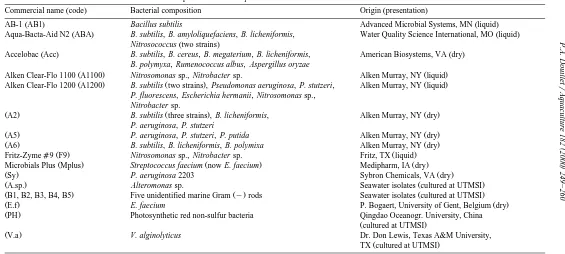Directory UMM :Data Elmu:jurnal:A:Aquaculture:Vol182.Issue3-4.Feb2000:
Teks penuh
Gambar



Dokumen terkait
Steam conditioning SP35 improved performance of silver perch. This is supported by significant improvements in individual weight gain and FCR compared with fish fed the unsteamed
the first experiment indicated there were no significant P - 0.05 differences in weight gain or feed efficiency of red drum fed the various energy levels. However, intraperitoneal
Ablation 50 m grg b.w.. Õ annamei was induced to mature by eyestalk ablation as well as by 5-HT injection Ž Fig. Following unilateral eyestalk ablation, animals started to
differences in growth occurred Fig. The relationship between growth rate and salinity was best described by a hyperbolic function with the fastest growth found at 20‰. Growth
growth rate between replicate cultures were determined in cultures seeded with SW bacteria, while the lowest were determined in cultures inoculated with either Alteromonas or two
In parallel with the thermal-stressed experiments presented in this paper, no significant alteration was observed in various defense activities in the eel skin including
European sea bass display predominantly nocturnal self-feeding patterns in winter and early spring, and this has been further examined by comparing the effect of night and day
Nitrate-N levels (mean ± standard error) in leachate beneath six pasture swards grown on drainage lysimeters at State College, PA, from April 1994 to March 1996..